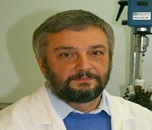
Matjaž Kunaver
National Institute of chemistry, Slovenia
Title: Biomass waste- A source of raw materials and nanocellulose
Biography
Biography: Matjaž Kunaver
Abstract
Biomass represents an immense and renewable source for the production of bio-fuels and valuable chemicals. Using liquefaction reaction, lignocellulosic components are depolymerized to low molecular mass compounds with high reactivity, high hydroxyl group content and can be used in many useful applications. We used liquefied biomass as a feedstock in polymer chemistry, such as synthesis of polyesters, polyurethane foams and adhesives. Herein, we also report on the optimized procedure for rapid preparation of nanocrystalline cellulose by liquefaction of its amorphous part of cellulose, lignin and hemicelluloses in ethylene glycol under acidic catalysis. Lignocellulosic biomass which was dispersed in glycol and methane sulfonic acid was used as a catalyst. The NCC was isolated as a residue, rinsed with 1,4-dioxane and centrifuged. The product was a NCC suspension in 1,4-dioxane or similar medium polar solvent. The crystallinity index was from 83% to 90% and the yield was more than 67% while using cotton as the starting material. Method for preparation of NCC by acid hydrolysis in ethylene glycol is a model procedure for NCC isolation from different natural cellulosic sources such as biomass with high yields and with high crystallinity index. A special attention was given to the utilization of the liquefied lignocellulosic materials as a new energy source with high heating value. The utilization of liquefied lignocellulosic materials can at least partially reduce the crude oil consumption, thus increasing the use of the renewable resources in large extent.

